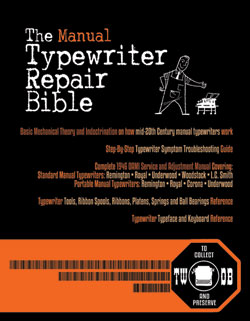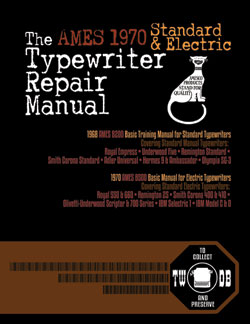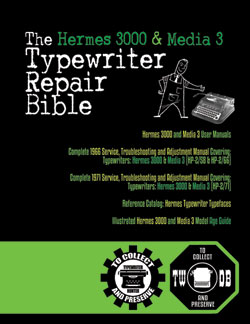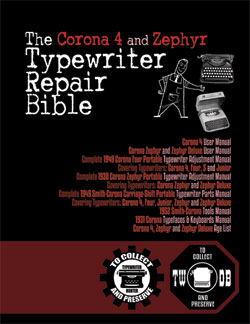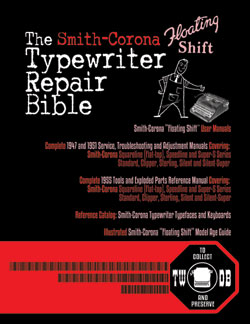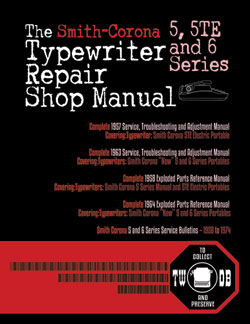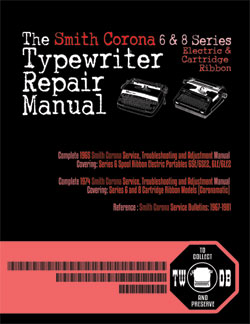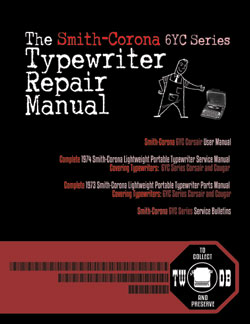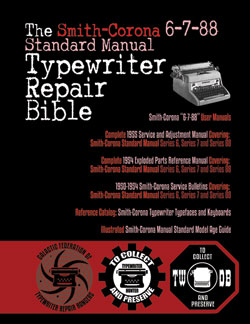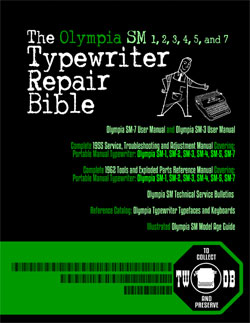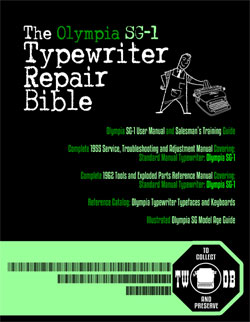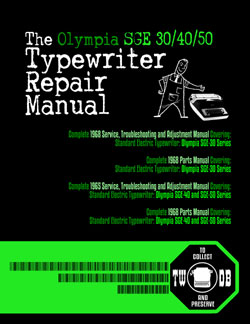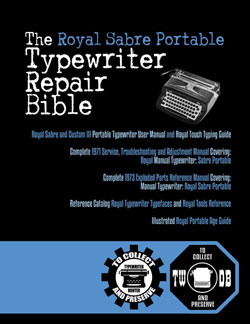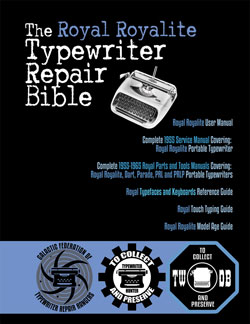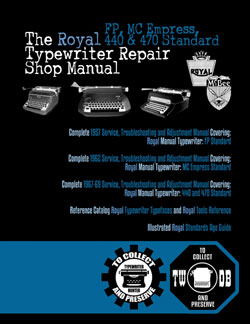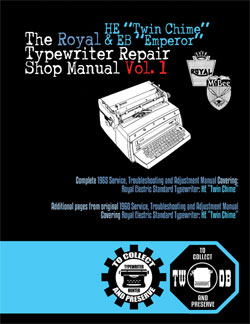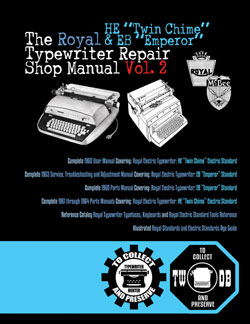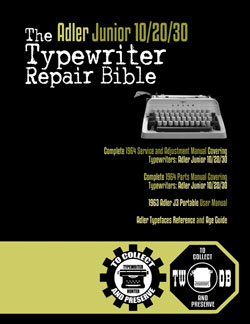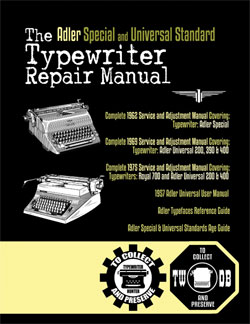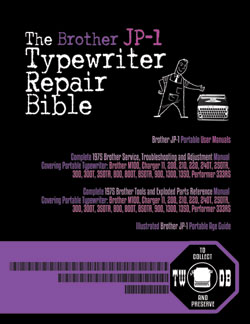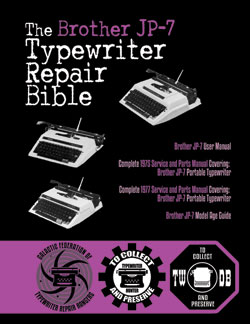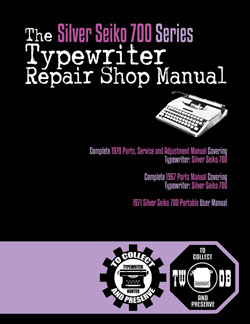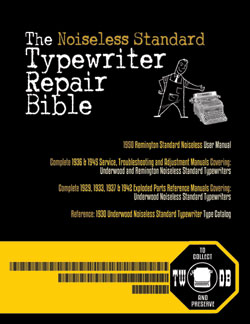1907 Remington 9 #12,220
Status: My Collection
Hunter: Mark Schrad (MLSchrad)
Created: 01-05-2024 at 03:19PM
Last Edit: 04-04-2024 at 11:20AM
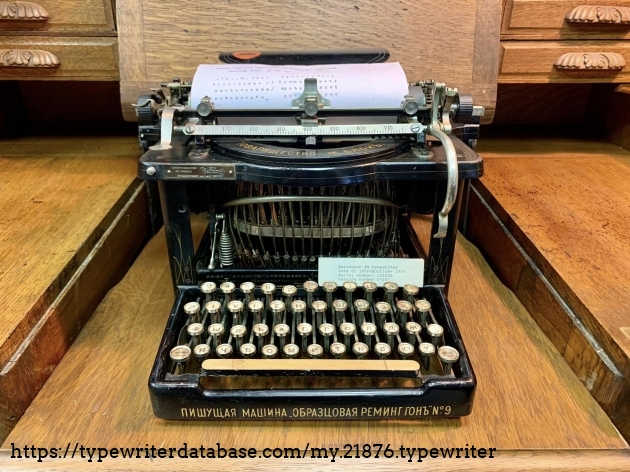
Description:
This Remington 9 is the wide-framed, 46-key variant of the more common Remington 6/7. Only a few thousand were made, primarily for foreign languages and export to foreign lands, and they seldom if ever made their way back to the States. This particular typewriter had been part of the Clark Family Collection, and for decades was displayed at the Office Equipment Historical Museum in Kansas City, and was purchased in December of 2023.
This Remington has the phrase ¬ę–Ę–ĺ–≤–į—Ä–ł—Č–Ķ—Ā—ā–≤–ĺ –Ė. –Ď–Ľ–ĺ–ļ—䬼‚ÄĒwhich translates as The Zh. Blok‚Äô Company‚ÄĒemblazoned prominently on the top of the machine, and all along the back side, and once again on a small metal plaque on the frame.
Searching both the English and Russian interwebs, we find that –Ė. –Ď–Ľ–ĺ–ļ—ä is actually Julius Block (1858-1934). Born in the British South African colony of Natal and raised in St. Petersburg, Russia, he was a gifted musician, who in the 1880s gave up his musical ambitions to take over his father‚Äôs successful business importing American goods into the Russian Empire. Business boomed under Julius, with stores on Kuznetsky Most in Moscow, Bolshaya Morskaya St. in St. Petersburg, Kyiv, Odessa, Nizhny Novgorod, Ekaterinburg, Warsaw, Rostov-on-Don and as far away as Tashkent and Kokand in present-day Uzbekistan.
Julius Block introduced all manner of new Western technology to the Russian Empire‚ÄĒnot just Remington (and later Corona) typewriters, but Fairbanks precision scales, Burroughs adding machines, Edison mimeographs, Eagle cotton gins, Singer sewing machines, Wells oil lamps and air compressors, Otis elevators, stoves, lathes, tools, office furniture, windmills, pumps‚Ķ everything.
He imported newfangled bicycles‚ÄĒClevelands and Ramblers‚ÄĒand stoked Russia‚Äôs newfound cycling craze. Block himself won Russia‚Äôs first bicycle race in 1883, and organized the Moscow Society of Amateur Cyclists the following year, writing several books on bike maintenance and the importance of cycling for health.
From European newspapers, Block learned about Thomas Edison‚Äôs new invention for the recording and playing of sound‚ÄĒthe phonograph. In 1889 he traveled to New Jersey to meet with Edison in person, and impress upon him the potential for recording and preserving not just music, but oral histories as well. Edison agreed to let Block take a phonograph back to Russia with him.
Once back in St. Petersburg, Julius Block showcased the phonograph to Russian high society, even demonstrating it to Tsar Alexander III, who immediately wanted one, putting Block in the position of negotiating with Edison for the delivery of another phonograph as a present for the tsar.
Yet perhaps Block‚Äôs most lasting legacy is effectively becoming the world‚Äôs first record producer. He organized ‚Äúphonographic soir√©es‚ÄĚ at conservatories and scientific meetings across Russia‚ÄĒand later across Europe‚ÄĒin which he made recordings not simply of the music of many renowned contemporaries, but oral histories of them as well, including Tchaikovsky, Tolstoy, Rimsky-Korsakov, Rubenstein, and hundreds more.
So that's whose name is splayed all over this Remington 9.
Typeface Specimen:
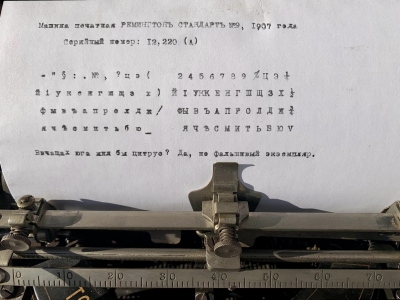
Photos:
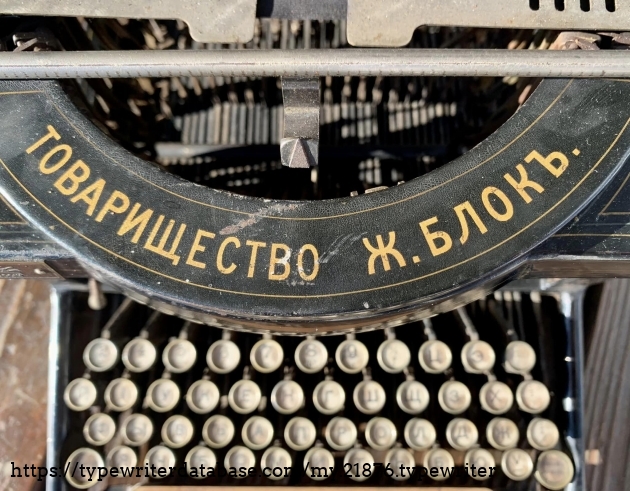
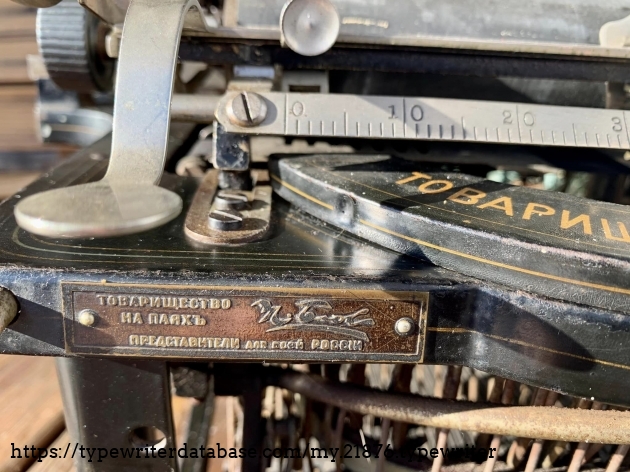
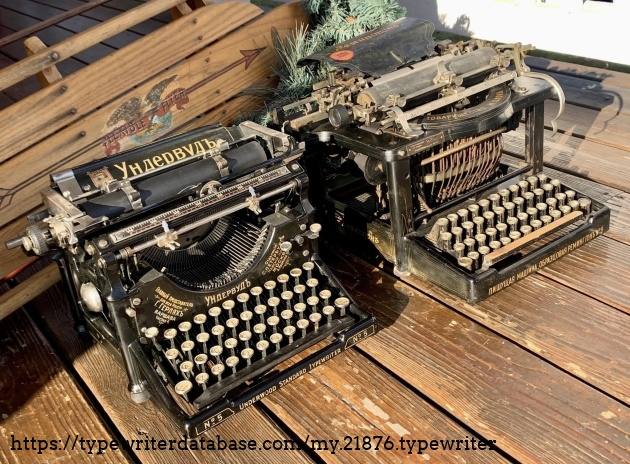
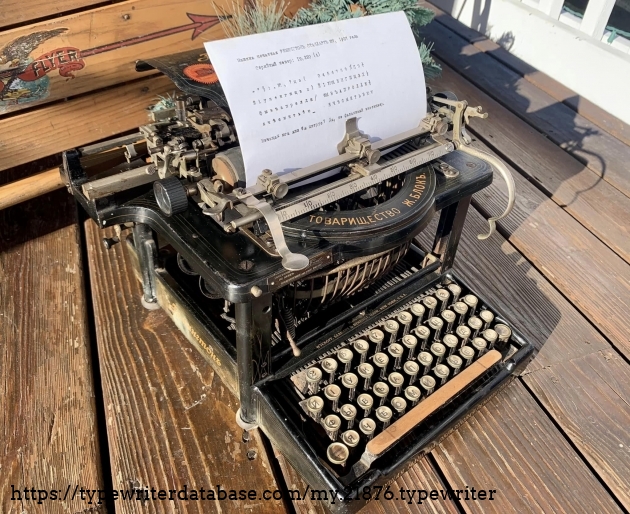
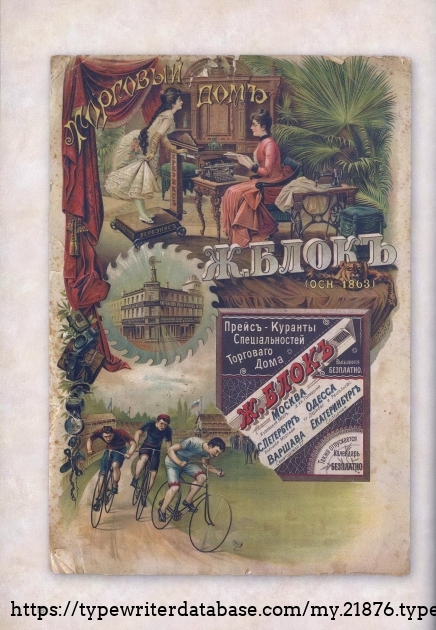
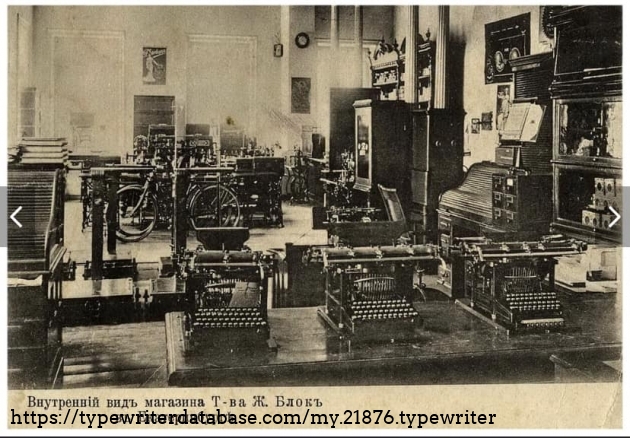
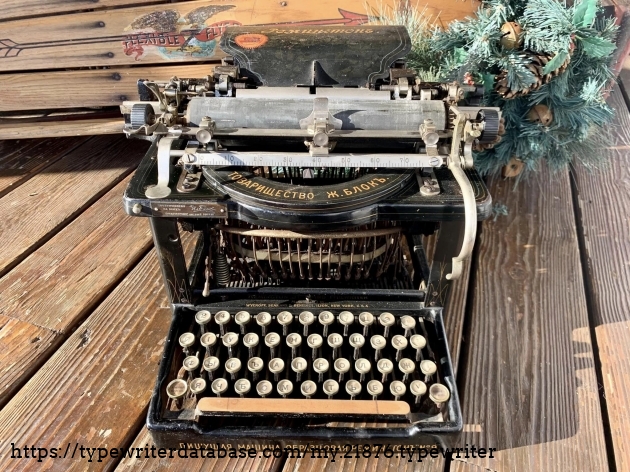
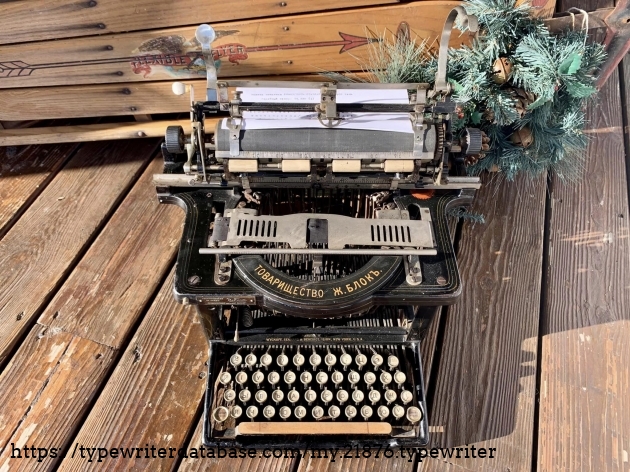
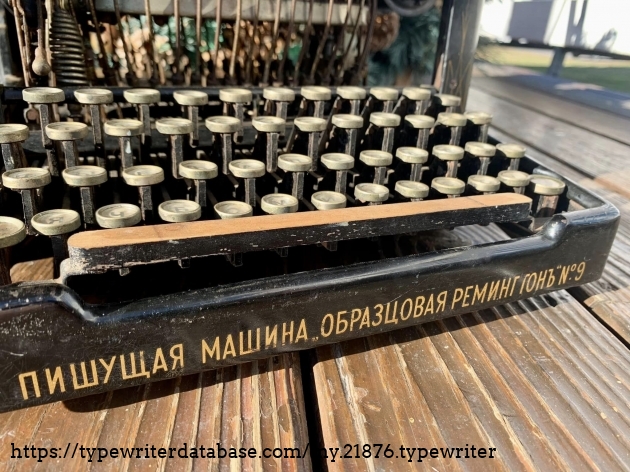
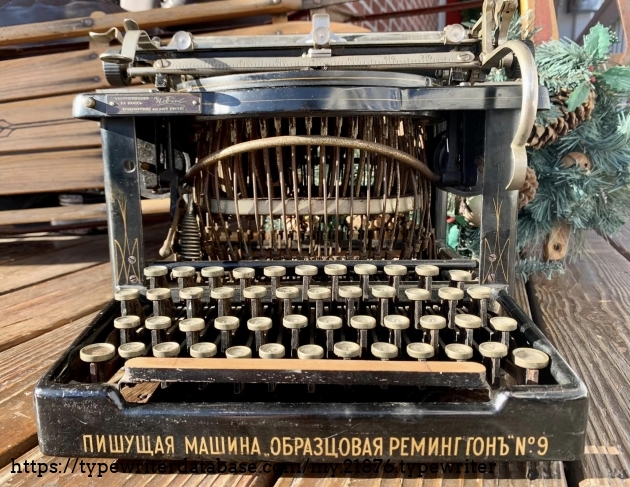
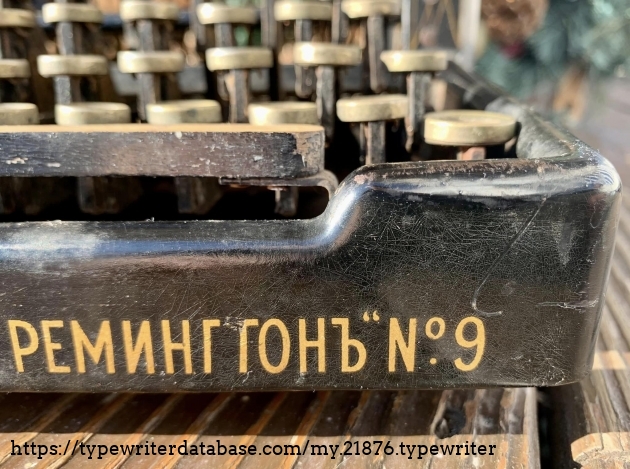
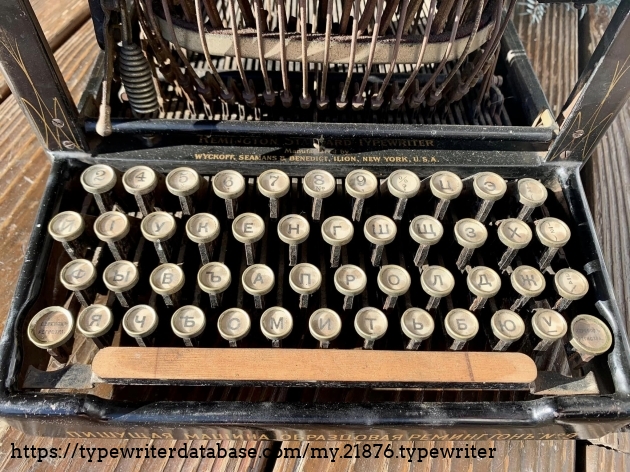
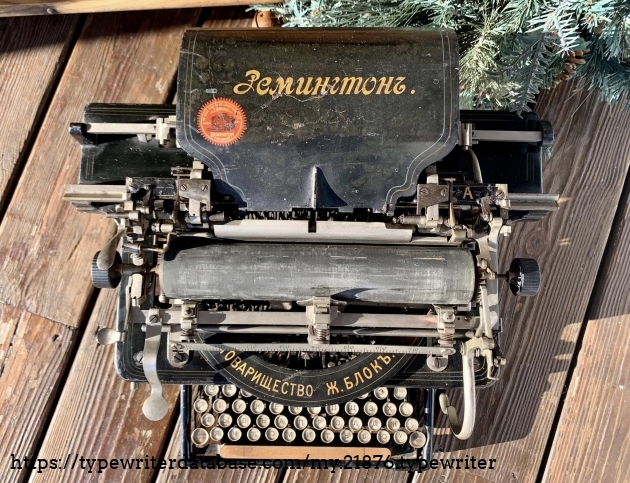
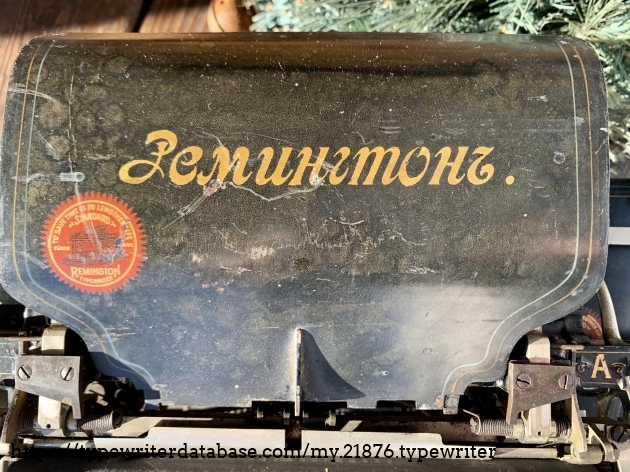
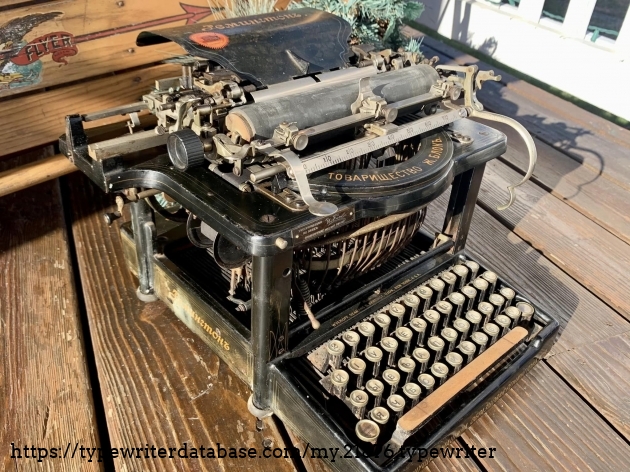
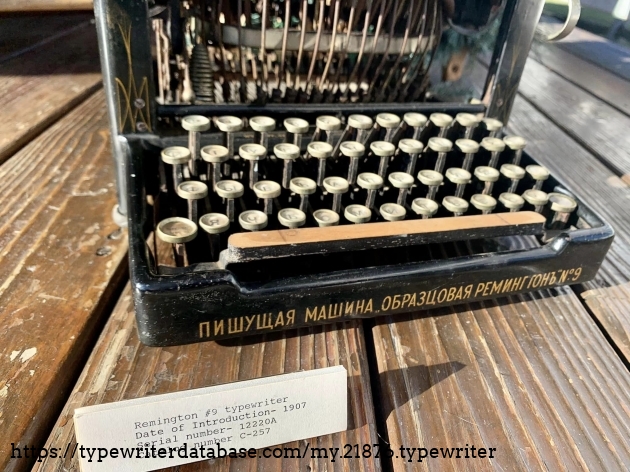
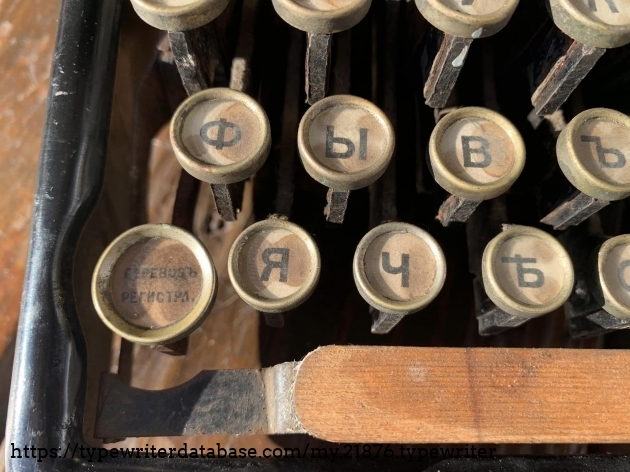
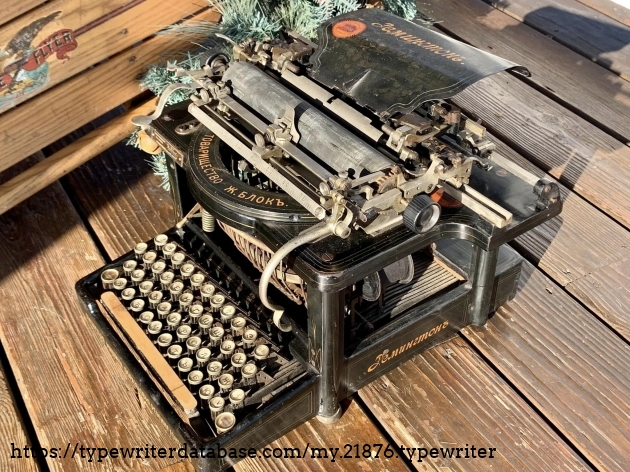
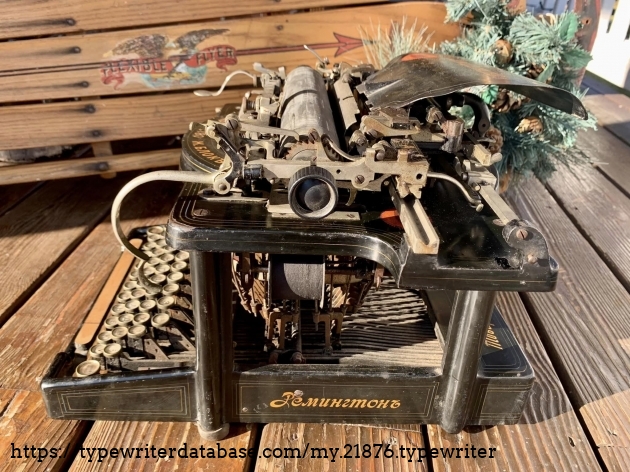
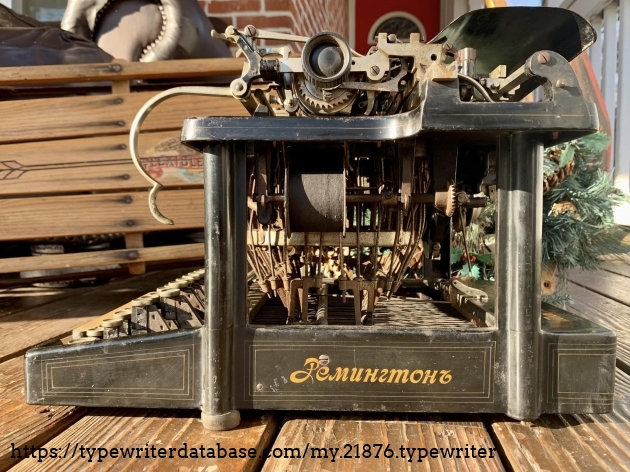
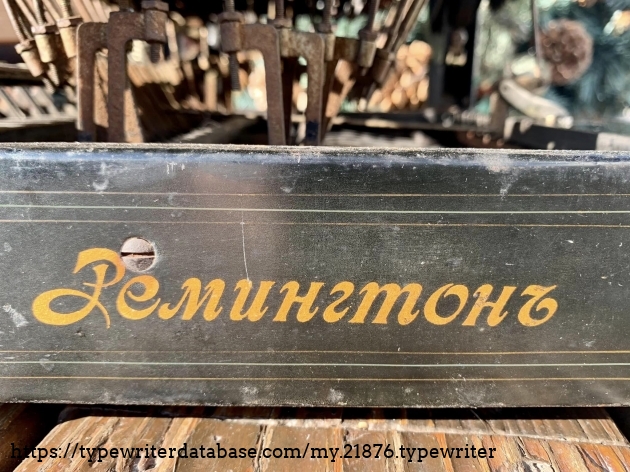
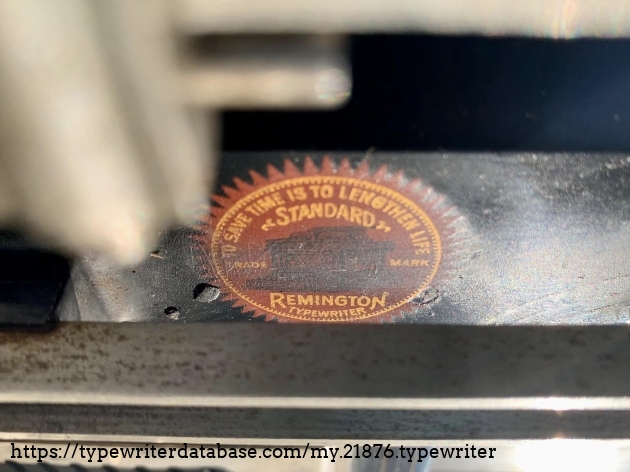
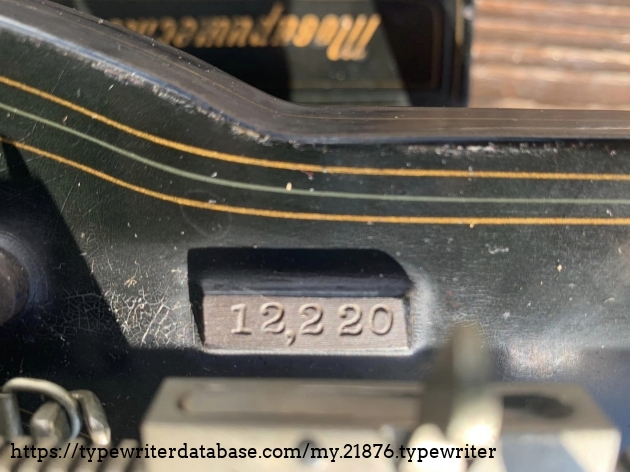
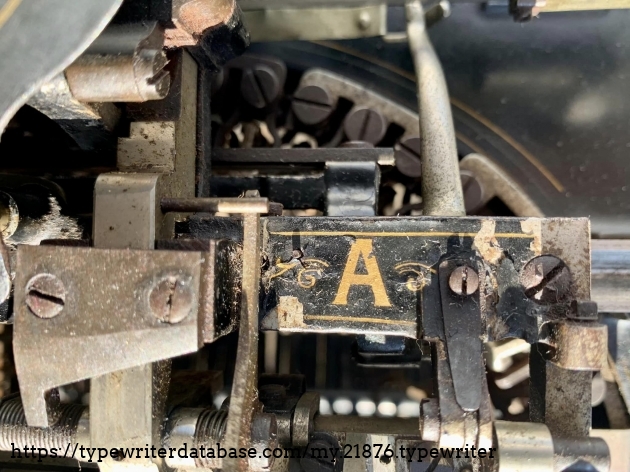
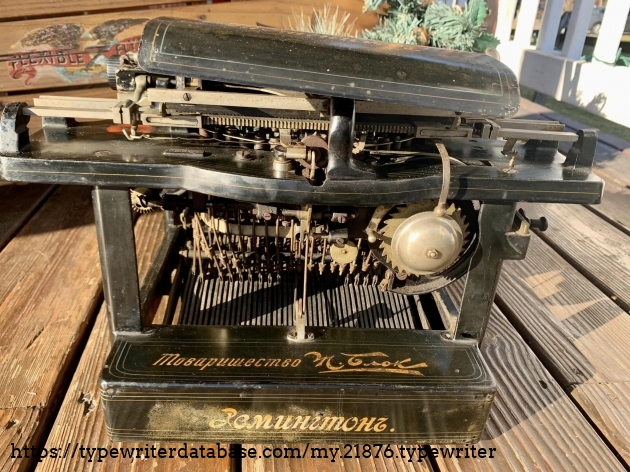
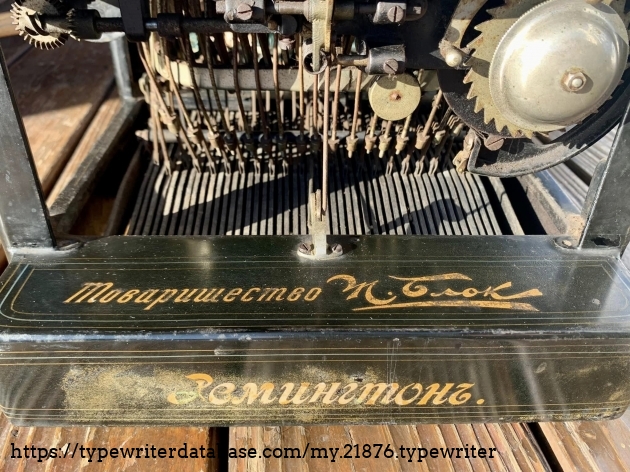
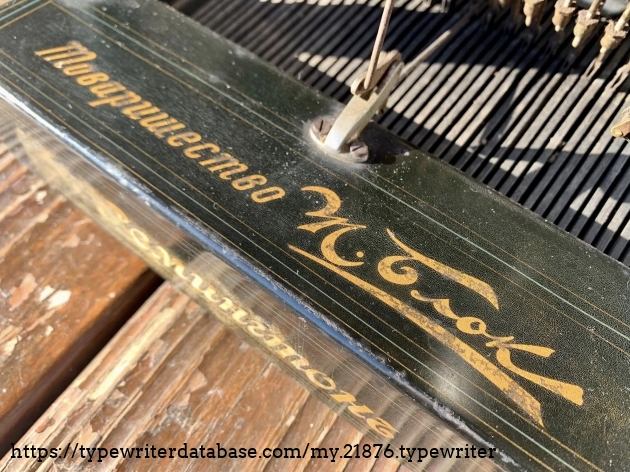
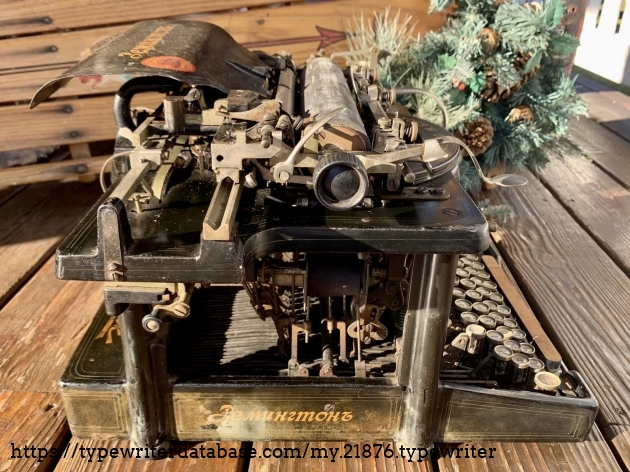
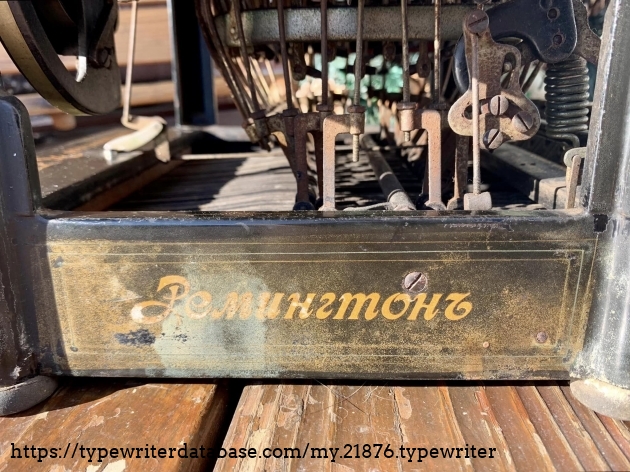
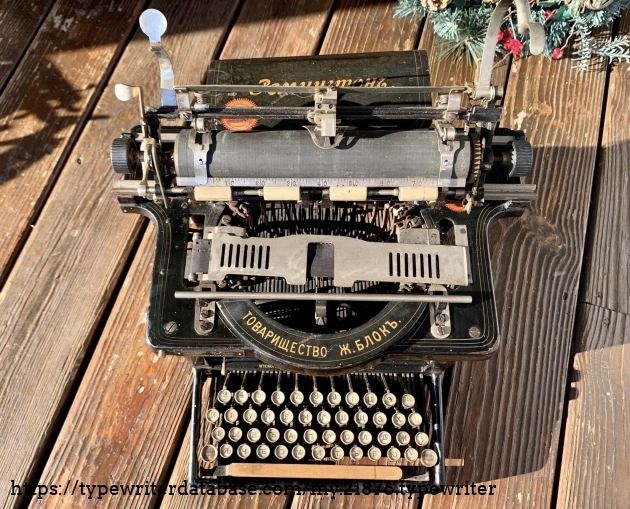
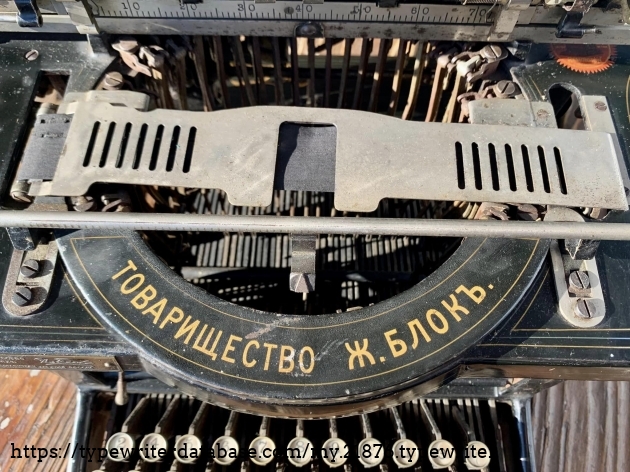
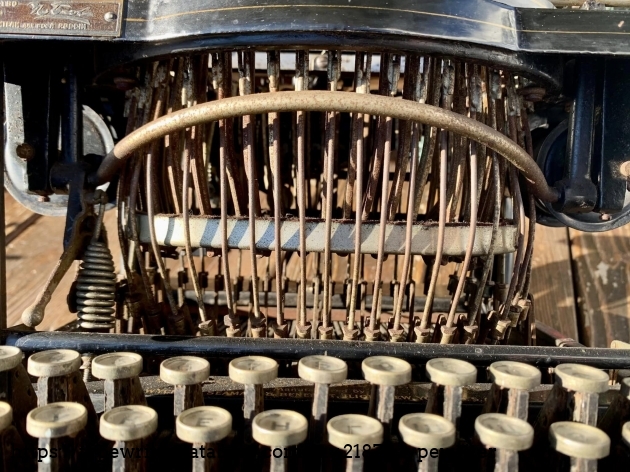
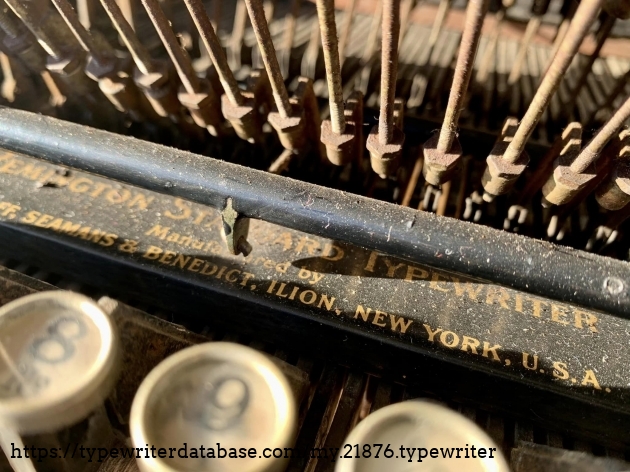
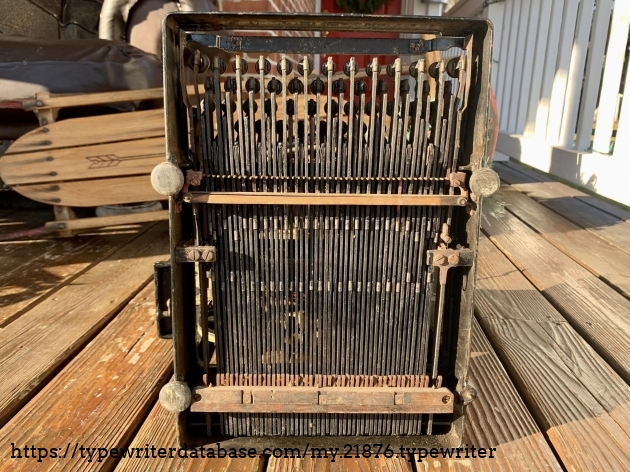


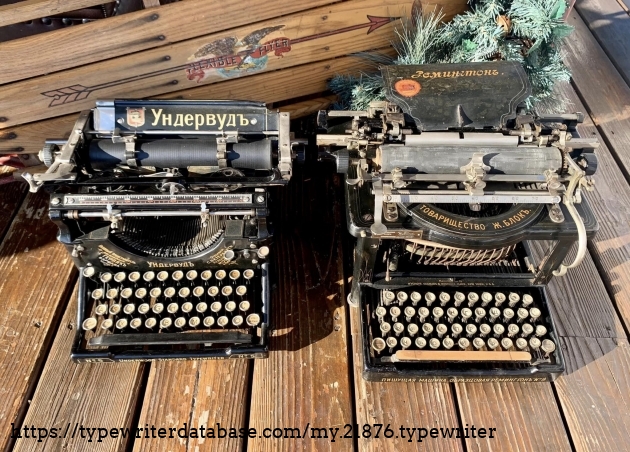
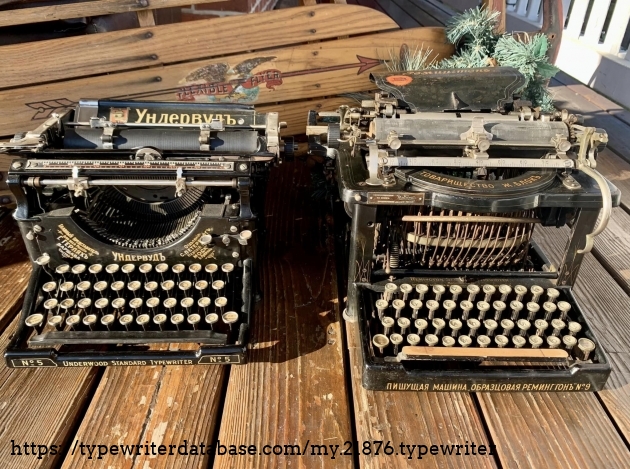
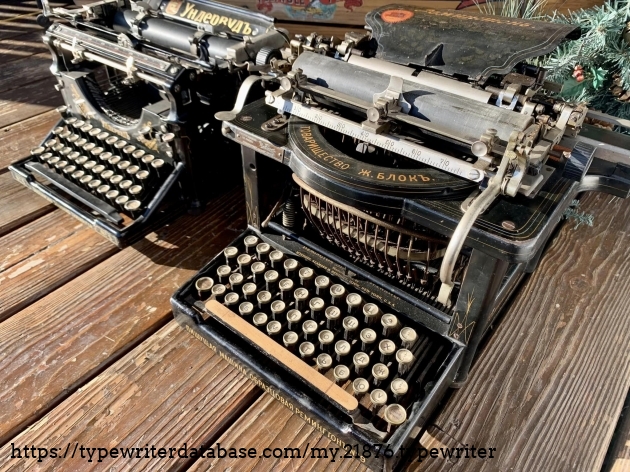
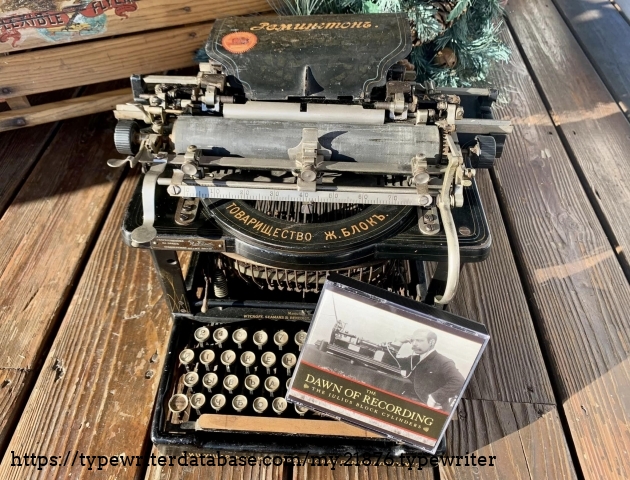
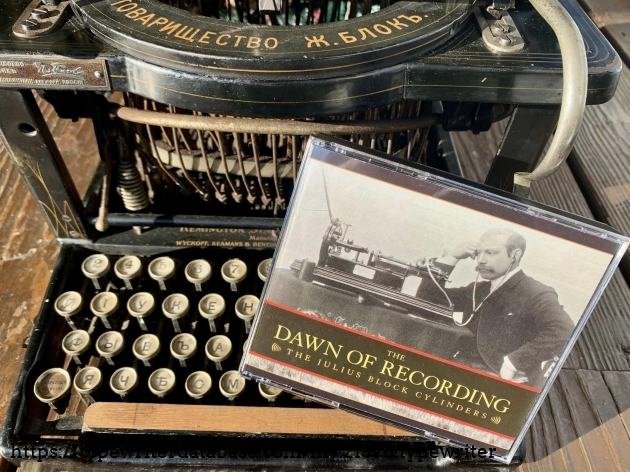
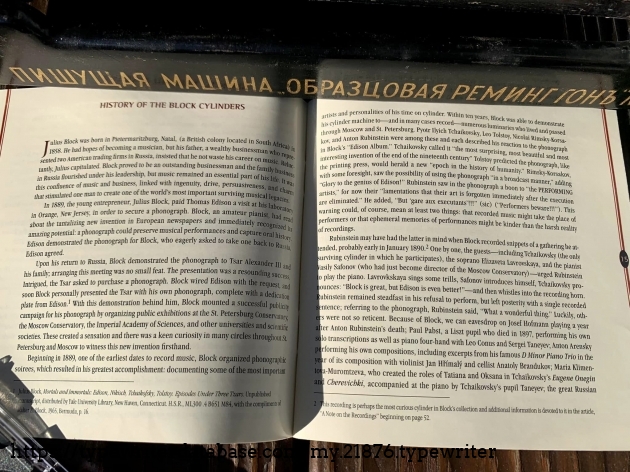
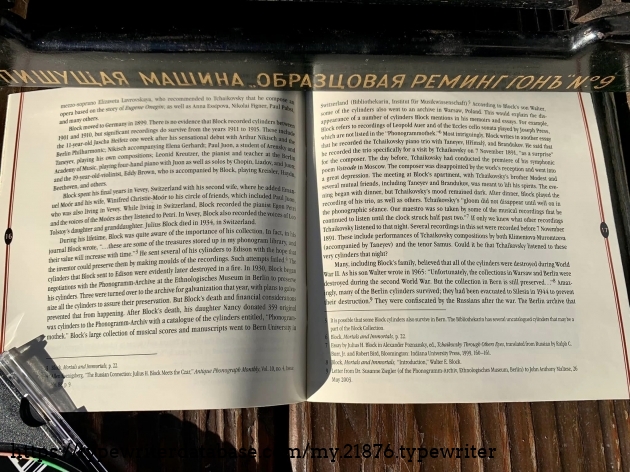
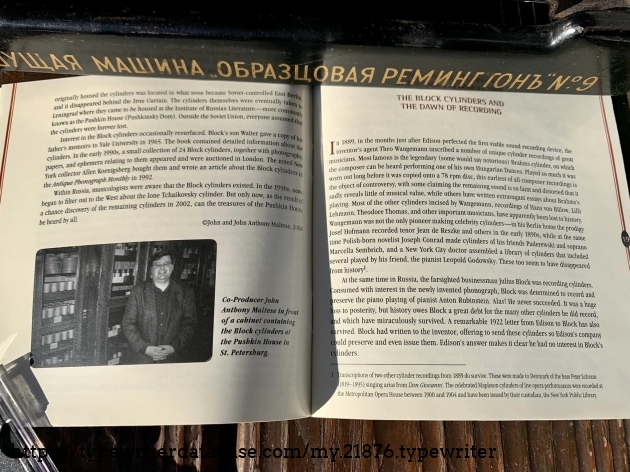
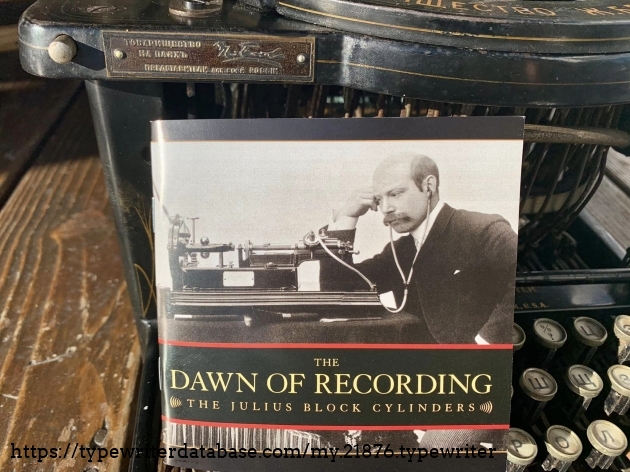
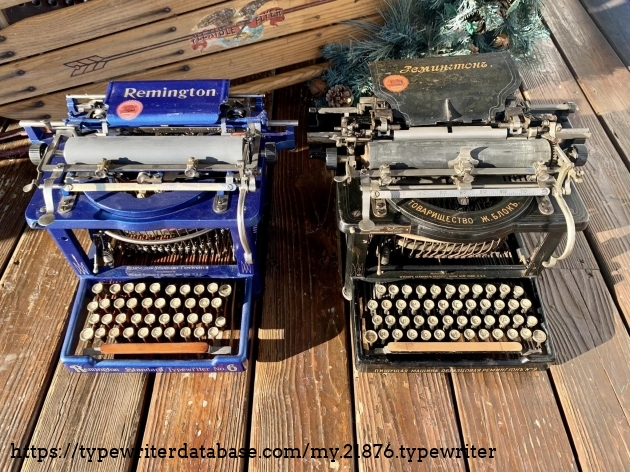
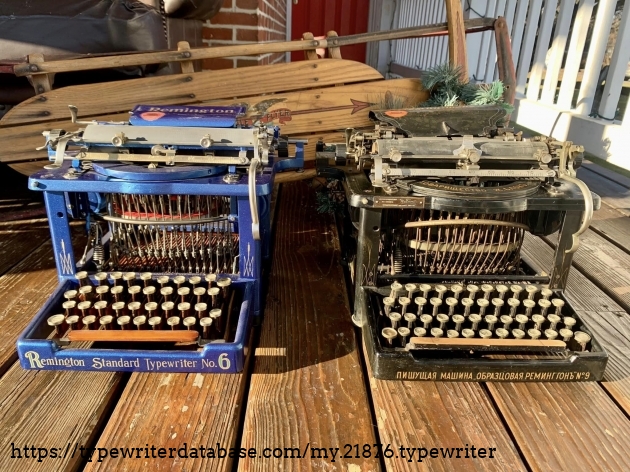
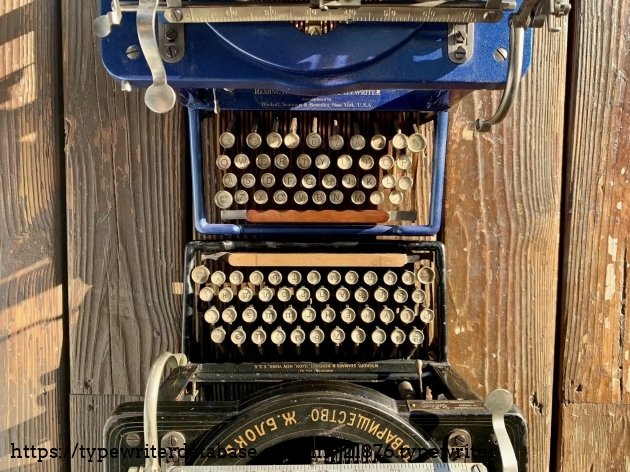
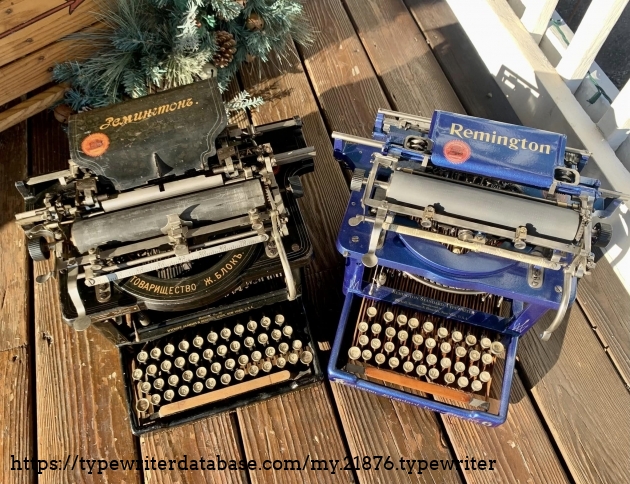
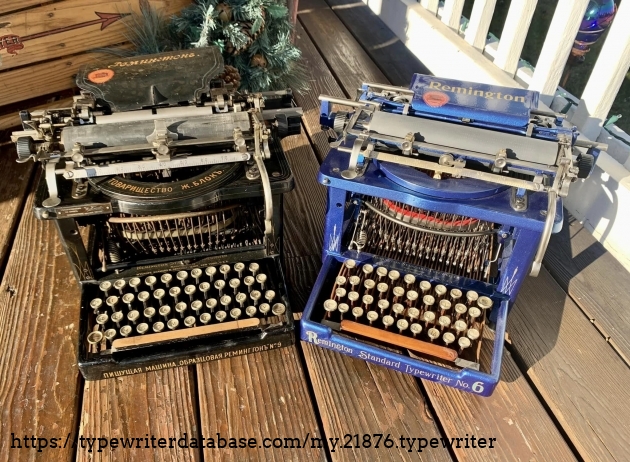
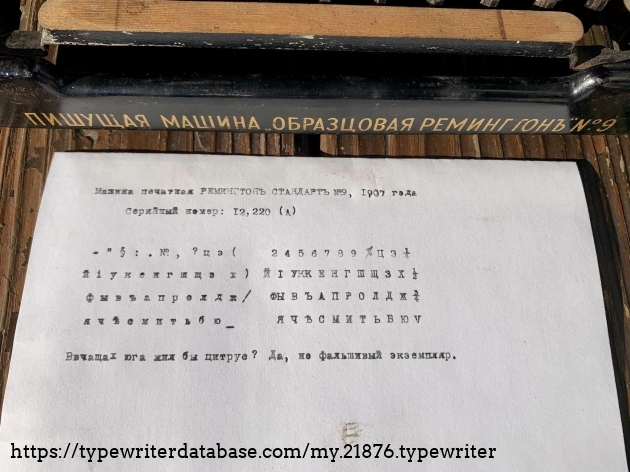
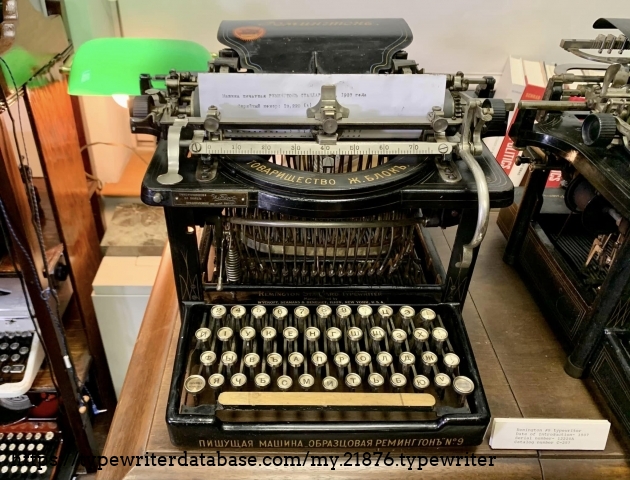
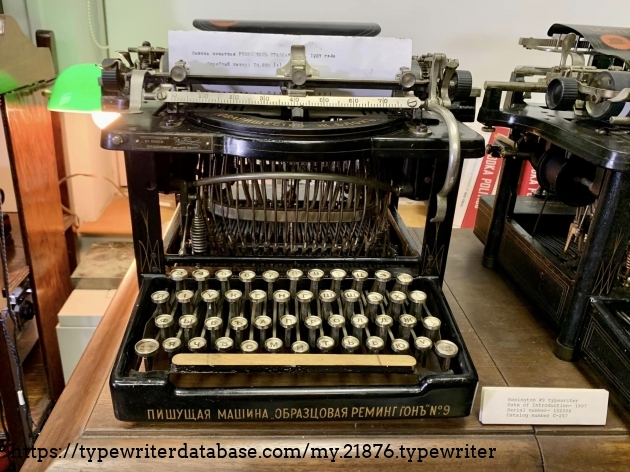
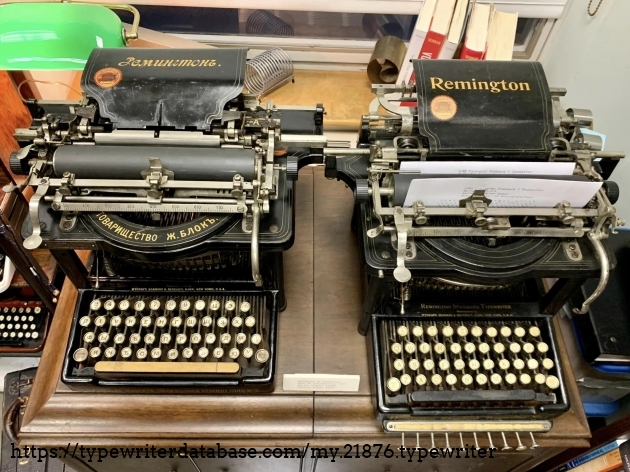
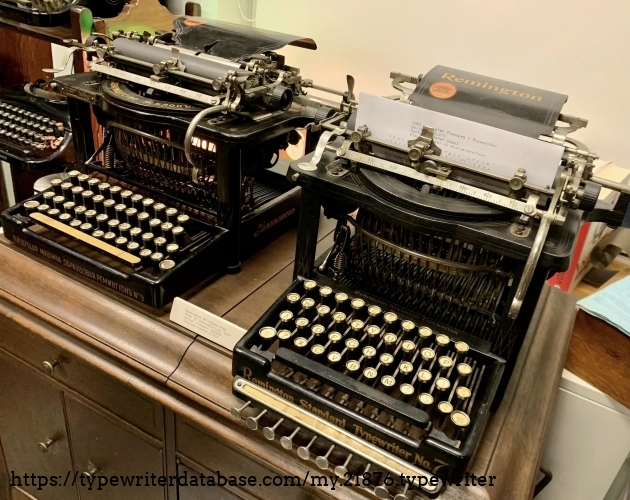
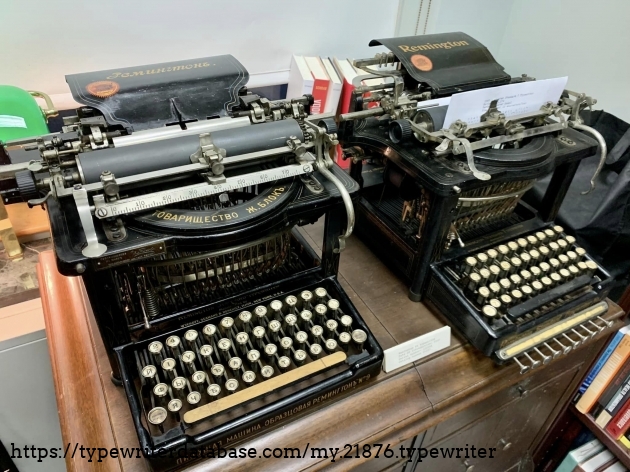
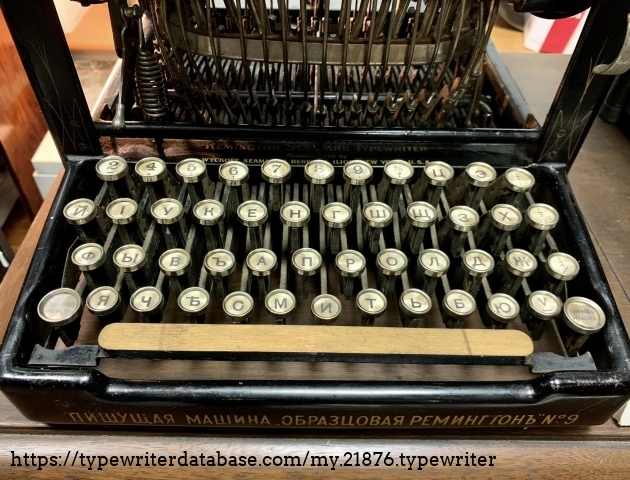
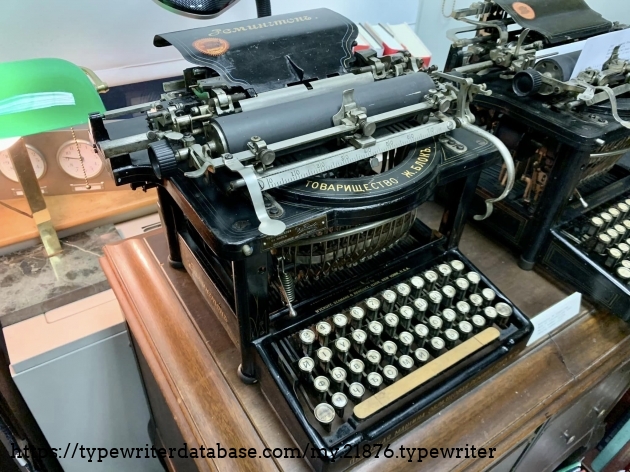
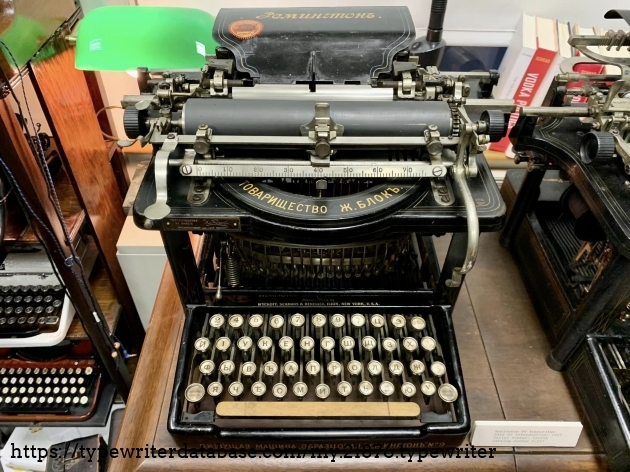
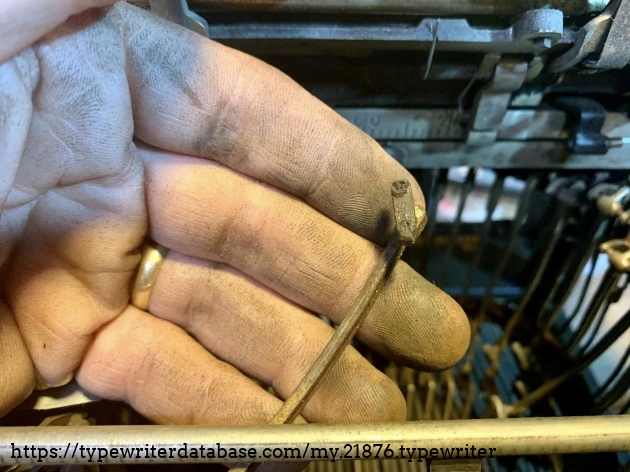
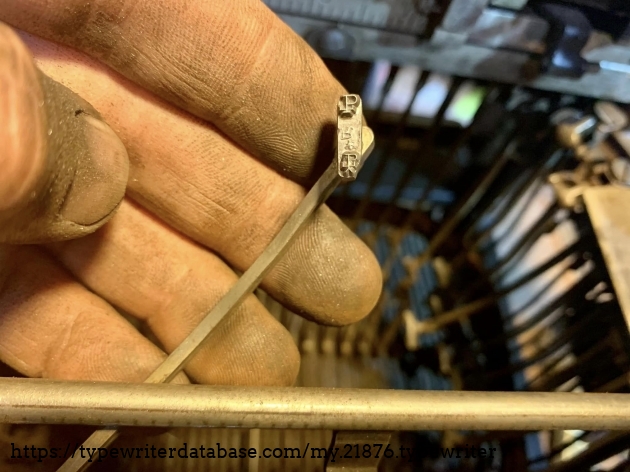
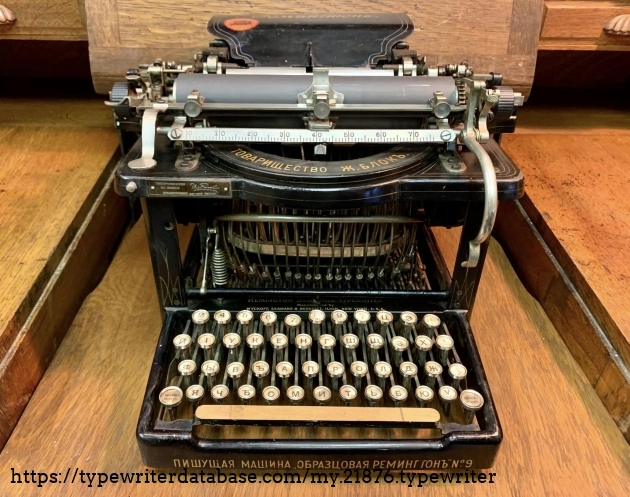
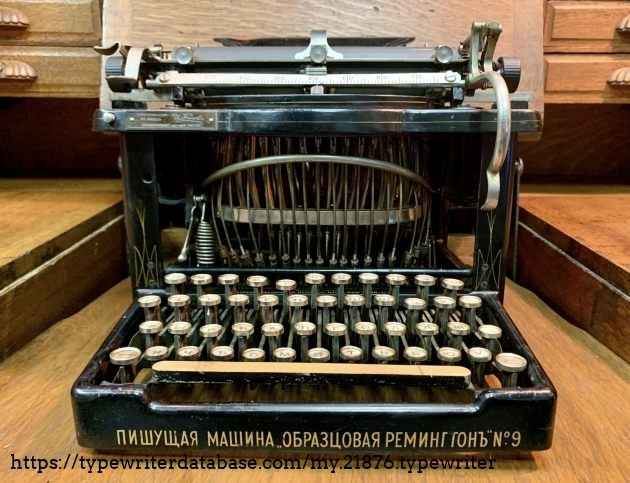
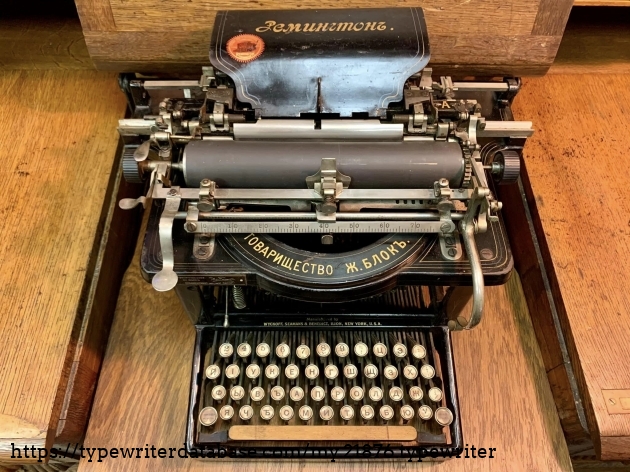
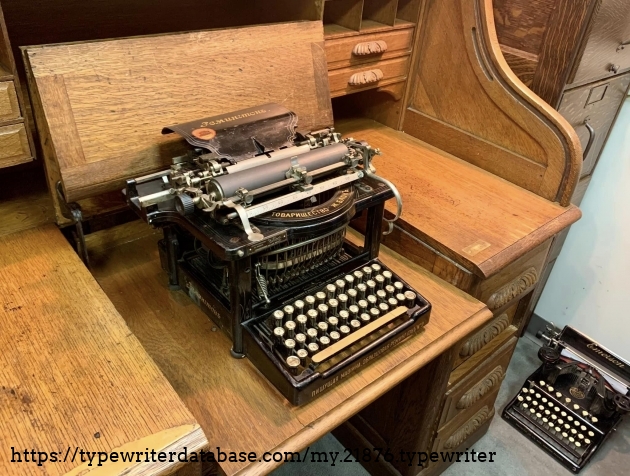
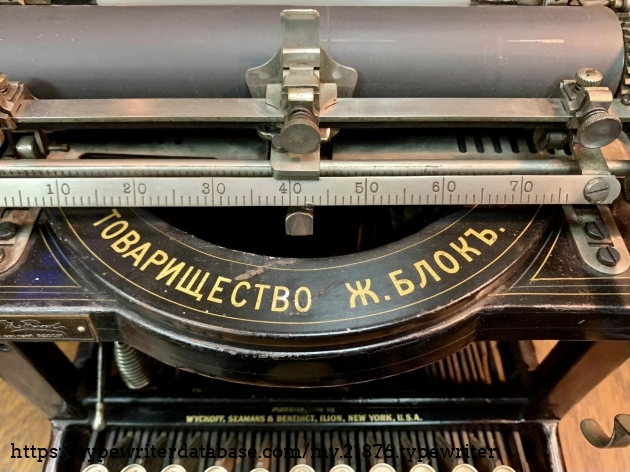
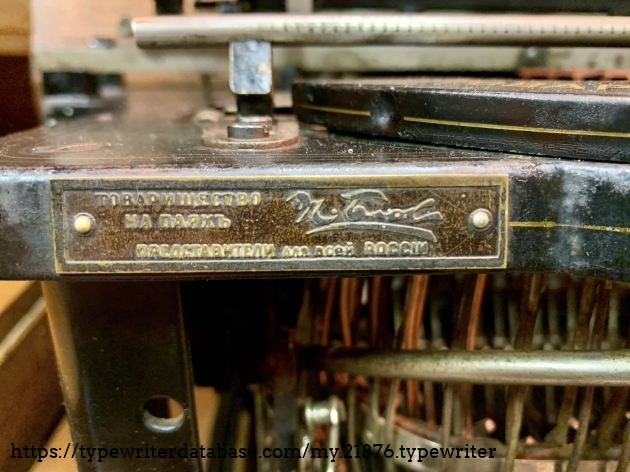
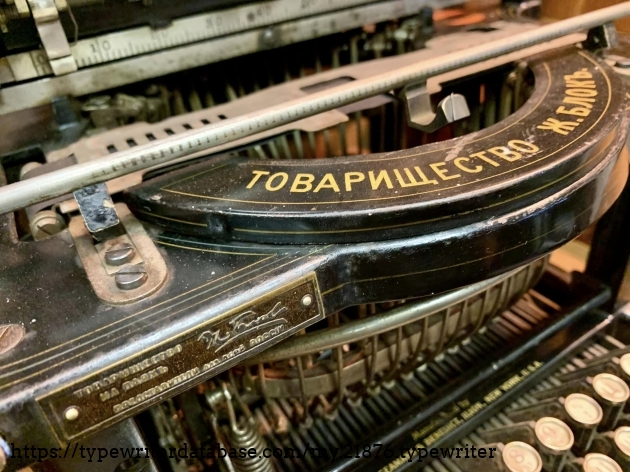
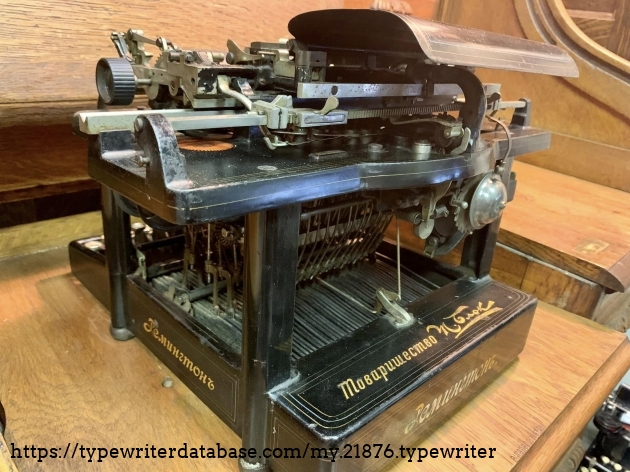
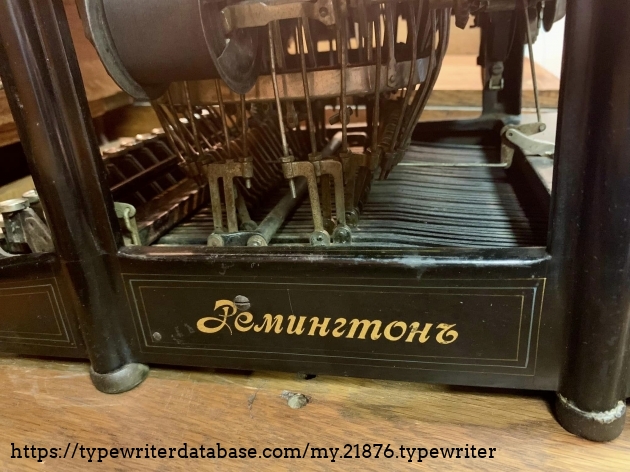
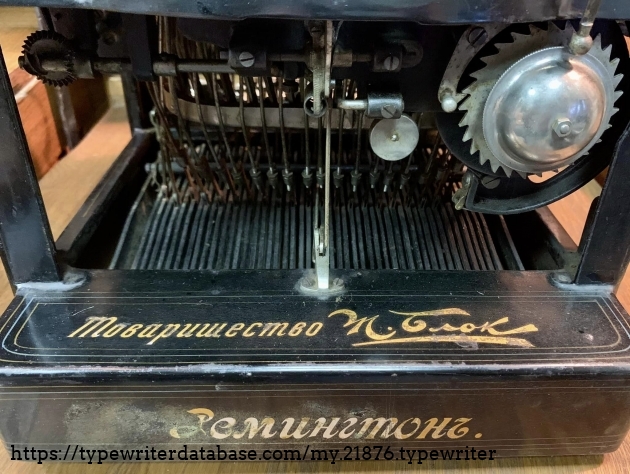
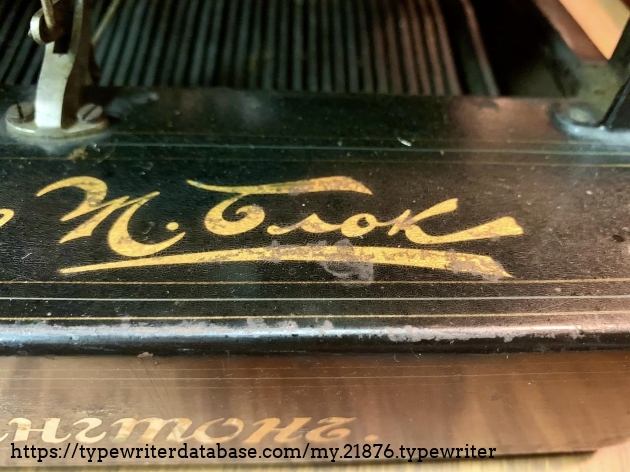
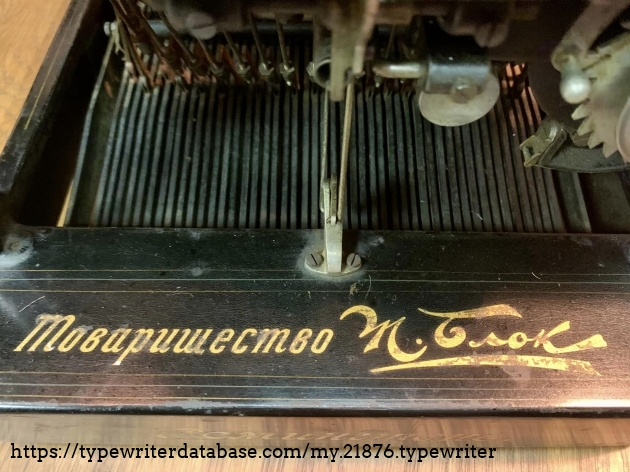
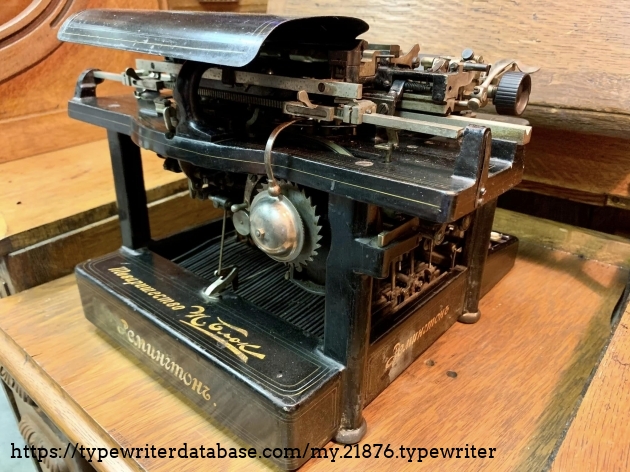
Hunter: Mark Schrad (MLSchrad)
Mark Schrad's Typewriter Galleries [ My Collection ] [ My Sightings ]
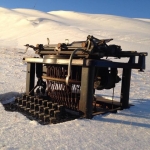
Status: Typewriter Hunter
Points: 26346
Professor of Political Science and Director of Russian Area Studies at Villanova University. Writes about alcohol politics, Russia, and international law when not refurbishing old typewriters.
RESEARCH NOTE: When researching the Remington 9 on a computer with lots of screen real estate, you may find that launching the Remington Serial Number page and the Remington 9 By Model/Year/Serial page in new browser windows can give you interesting perspectives on changes throughout the model series.
